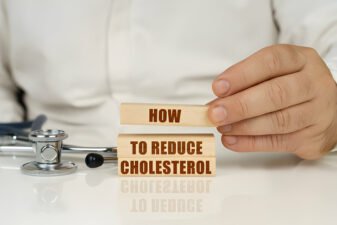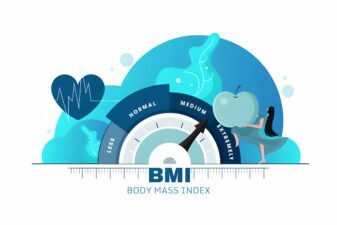The US National Heart Lung and Blood Institute use three criteria for assessing the health risks associated with obesity and overweight.
Body Mass Index (BMI)
Waist Circumference
Other Risk factors for Diseases Associated with Obesity
(1) Body Mass Index (BMI)
The BMI is a widely used weight-assessment system which gives each person a “score” according to their height and weight. In simple terms, the higher your BMI score, the greater the risk of developing weight-related health problems.
To calculate your BMI, click: Calculate Your Body Mass Index Score
How Body Mass Index Classifies Weight
Under 20 (19 for women) = Underweight
Between 20 and 24.99 = Normal Weight
Between 25 and 29.99 = Overweight
Between 30 and 34.99 = Obese Class 1
Between 35 and 39.99 = Obese Class 2
40 and above = Morbid Obesity
How Body Mass Index Classifies Weight-Related Health Risk
BMI of < 20.00 – Risk = Moderate to Very High
20.00 to 21.99 – Risk = Low
22.00 to 24.99 – Risk = Very Low
25.00 to 29.99 – Risk = Low
30.00 to 34.99 – Risk = Moderate
35.00 to 39.99 – Risk = High
BMI of > 40.00 – Risk = Very High
What are the Weight-Related Health Dangers?
Excess body fat can cause a variety of health problems, including:
– Hypertension
– Cardiovascular Disease
– Stroke
– Dyslipidemia
– Insulin Resistance
– Adult-Onset Diabetes (Type 2)
– Sleep Apnea
– Osteoarthritis
– Gastro esophageal reflux
– Urinary stress incontinence
Drawbacks of Body Mass Index
The body mass index system has several weaknesses. First, it’s weight categories are not universally accepted. Second, it takes no account of muscle-fat ratio. So it tends to overestimate health risks for muscular athletes, while underestimating the risks for older people and those who have lost muscle mass. Lastly, there is no allowance made for age or sex in the weight tables. Once you are an adult, the various categories and weight ranges apply equally to men and women.
(2) Waist Circumference
For people with a BMI of 34 or less, waist circumference provides an independent prediction of risk over and above that of body mass index. This because body fat tissue which is stored around the stomach and abdomen poses a greater health risk than body fat located in the lower half of the body. For example, some studies indicate that abdominal fat plays a role in the development of high blood pressure, high cholesterol, high blood sugar, and heart disease.
What is a Healthy Waist Circumference?
Women
Waist of over 31 inches (about 80cm) indicates slight health risk.
Waist of over 35 inches (about 90cm) indicates substantially increased risk.
Men
Waist of over 37 inches (about 94cm) indicates slight health risk.
Waist of over 40 inches (about 102cm) indicates substantially increased risk.
NOTE: For a concise explanation of how ALL surplus calories (from fats, protein AND carbs) are converted to body fat and stored as adipose tissue, see How We Gain Body Fat?
(3) Other Health Risk Factors
In addition to body mass index and waist measurement, there are additional risk factors to consider when assessing your weight-related health. These other factors include:
– high blood pressure (hypertension)
– high LDL-cholesterol (“bad” cholesterol)
– low HDL-cholesterol (“good” cholesterol)
– high triglycerides
– high blood glucose (sugar)
– family history of premature heart disease
– physical inactivity
– cigarette smoking
Weight-Health Assessment
For individuals who suffer from obesity (BMI > 29.9), or those who are overweight (BMI 25-29.9) and have two or more risk factors, the guidelines recommend weight reduction. Even a minor loss of weight (eg. 10 percent of current weight) will help to reduce your risk of developing diseases associated with obesity. Patients who are overweight, who do not have a high waist measurement, and have less than 2 risk factors may need to prevent weight gain rather than lose weight.
For a proper assessment of your weight-related health, talk to your doctor. Your doctor will calculate your body mass index, waist circumference and other risk factors for heart disease. People who are overweight or obese have a greater chance of developing hypertension (elevated blood pressure), raised blood cholesterol or other blood-fat disorders, type 2 diabetes, heart disease, stroke, and certain cancers. The good news is, even a small weight loss (just 10 percent of your current weight) will help to lower your risk from these diseases.
Note About the Dangers of Weight Gain in Later Life
Weight gain as you age increases the chances of developing one or more chronic diseases. In the Nurses’ Health Study and the Health Professionals Follow-up Study, middle-aged women and men who gained 11 – 22 pounds after age 20 were up to three times more likely to develop heart disease, high blood pressure, type 2 diabetes, and gallstones than those who gained five pounds or fewer. Those who gained more than 22 pounds had even larger risks of developing these diseases.
A Note About Body Composition
Broadly speaking, in a healthy woman of average weight, fat tissue makes up 27 percent of total body weight, muscle tissue about 35 percent and skeleton about 12 percent. In a man of average weight, the approximate percentages are 15 percent fat, 45 percent muscle, 15 percent skeleton. The remaining 25 percent or so, in both cases, is composed of skin, blood plasma, connective tissue, tendons, organs, hair and so on.
Weight of Water Content
Water accounts for about 70 percent of the total body weight of an average person. Muscle is roughly 75 percent water, 20 percent protein and 5 percent minerals and other matter. Body fat and bones are roughly 50 percent water.
Weight of Bones
The skeleton typically accounts for quite a small amount of total body weight. For instance, bone weight in a female of 160 pounds is about 19.2 pounds, while a male who weighs 200 pounds has only about 30 pounds of weight in his bones. Thus although weight does vary somewhat according to bone size or bone density, we can’t really claim that our bones make us overweight!
More Information About Weight Management











